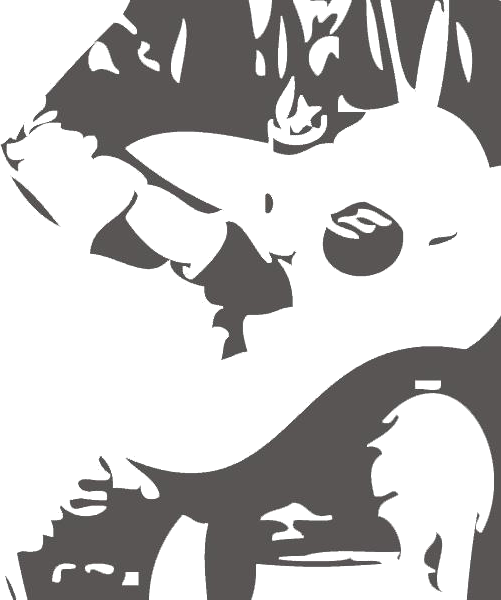National Trojan 1934 | SOLD | (v2110) In the early 1930s, National created a deal with Harmony and Kay to produce wood bodies which were purchased by National and sent to their manufacturing facility for installation of the metal parts, and finally shipped for sale. The Trojan was among the least expensive of these wood-bodied Nationals, and the entire National line, and helped the struggling company weather the Great Depression.
The bodies are made from mahogany ply, with segmented f-holes cut into the top. The sound well contains the spun aluminum resonator cone. There is a 'neck stick' installed inside, but is not joined to the neck; the neck attachment is a traditional dovetail joint. The neck appears poplar capped with a dyed maple fingerboard. The neck joins the body at the 14th fret. The serial number on this instrument dates it to 1934. The body is sunburst on its top, back and sides.
There were some prior repairs to the guitar, including removal of the neck to reset the angle years ago. We removed the neck again, and cleaned up the sloppily glued old repair, and re-glued the joint with hot hide glue. The fingerboard was also damaged in a prior repair, so it was removed and replaced with a new ebony board, re-using the original position dots. The new frets were leveled and dressed. The guitar shows 'single owner' play wear, and various nicks and dings from time and use.
Overall, this is a very solid guitar that plays smoothly. The wood body provides a less sharp tone than it metal siblings, a tone which we prefer for finger style playing.
The bodies are made from mahogany ply, with segmented f-holes cut into the top. The sound well contains the spun aluminum resonator cone. There is a 'neck stick' installed inside, but is not joined to the neck; the neck attachment is a traditional dovetail joint. The neck appears poplar capped with a dyed maple fingerboard. The neck joins the body at the 14th fret. The serial number on this instrument dates it to 1934. The body is sunburst on its top, back and sides.
There were some prior repairs to the guitar, including removal of the neck to reset the angle years ago. We removed the neck again, and cleaned up the sloppily glued old repair, and re-glued the joint with hot hide glue. The fingerboard was also damaged in a prior repair, so it was removed and replaced with a new ebony board, re-using the original position dots. The new frets were leveled and dressed. The guitar shows 'single owner' play wear, and various nicks and dings from time and use.
Overall, this is a very solid guitar that plays smoothly. The wood body provides a less sharp tone than it metal siblings, a tone which we prefer for finger style playing.













